- LAGRANGIAN
- Posts
- Issue 76 | Breaking Space News: Nov 09 - 16, 2025
Issue 76 | Breaking Space News: Nov 09 - 16, 2025
Massive Coronal Mass Ejections from the Sun, Triggered Geomagnetic Turbulence, Auroras and Disruption in the Space Industry. This Week in Space News — The Fall of Icarus, Scars from a Martian Ice Age, Volcanic Plumes, Food from Thin Air in Spaceflight, Soft‐Robotic Exosuits, and Planets Generating Their Own Water. Also: Amazon’s Project Kuiper Rebrand, China’s Launch Record, Orbital Manufacturing, Dream Chaser Updates, and More.

Explorer, welcome back!🚀
Thanks for joining this Monday. Last week was packed and witnessed some compelling developments in space commerce and science. Start with the striking mix of images. For a change the defense sector experienced less activity. I’ll let you get on with it. Having trouble with links? Click below for the full newsletter experience.
Hope you enjoy this Space.
ESA Research Tests Microbial Protein Systems from “Thin Air” for Long-Duration Spaceflight
ISRO Validates Gaganyaan Recovery, Completes Key Parachute Qualification for Human‑Rated Capsule
Intense Solar Activity Triggers Record Geomagnetic Storm with Global Radio Blackouts and Auroras
NASA’s ESCAPADE Twin Spacecraft Begin Journey to Study Mars Magnetosphere
Satellite Data Show Earth’s Magnetic Field Behaves Differently Than Predicted by Long‑Held Models
World's First High‑Volume Space Solar Manufacturing Facility Launched in New York by mPower
Space Cargo Unlimited and Atmos Plan to Test Industrial Production in Microgravity Starting 2026
Amazon Rebrands Project Kuiper Satellite Broadband Venture as Amazon LEO
European Space Agency Awards Second Contract to SBQuantum for Diamond Magnetometer Prototype
Sierra Space Dream Chaser Spaceplane Completes Pre‑Flight Testing Ahead of 2026 Orbital Mission

IMAGES
“The Fall of Icarus,” Skydiver in Front of the Sun : Andrew McCarthy

Arizona-based astrophotographer, Andrew McCarthy, captured YouTuber and musician Gabriel C. Brown, who jumped from a small propeller-powered craft at an altitude of around 3,500 feet (1,070 meters), around 8,000 feet (2,440 m) from McCarthy's camera, appearing to fall past the Sun’s disk, creating a striking composite of human motion against solar imagery.
McCarthy is known for producing high-resolution solar and lunar images, often stitching together thousands of frames to reveal fine details. (Credit: Andrew McCarthy/cosmicbackground.io)
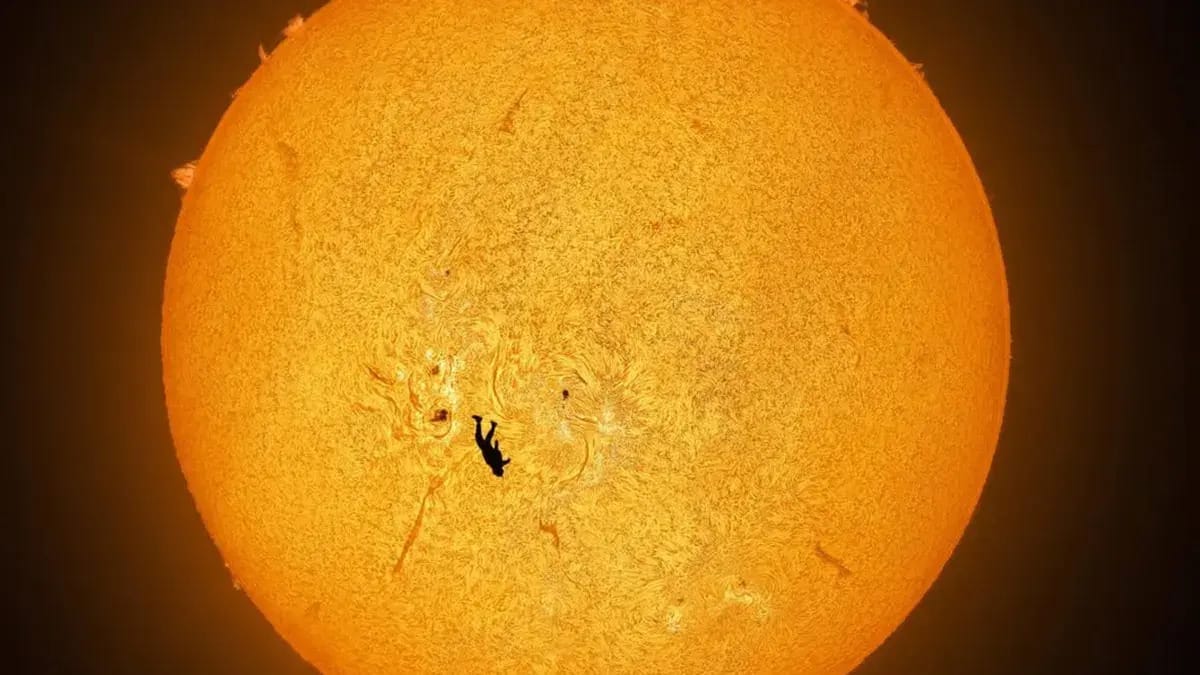
The photo highlights the Sun’s surface detail while juxtaposing a silhouetted skydiver, illustrating both the scale of solar observation and the creativity of astrophotography.
The image has drawn attention online, as space photography increasingly intersects with artistic expression. Beyond its viral appeal, the work is an example how visual storytelling can shape public engagement with astronomy, blending scientific accuracy with imaginative presentation. (Credit: Andrew McCarthy/cosmicbackground.io)
The Patterns of Coloe Fossae, Remnants From a Martian Ice-Age : High Resolution Stereo Camera on ESA’s Mars Express

New imagery from ESA’s Mars Express reveals glacial remnants in Coloe Fossae, a mid-latitude region marked by deep valleys and craters.
This image, created using data from ESA’s Mars Express High Resolution Stereo Camera (HRSC), offers a top-down view of the Coloe Fossae region on Mars. The wavy surface patterns trace the paths of material movement during a past Martian ice age. The smoother, less cratered terrain near the base of the cliff suggests it formed more recently than the older, heavily cratered highlands above.
The patterns, known as lineated valley fill and concentric crater fill, indicate slow-moving icy debris flows during the ice age. These features suggest that ice once extended far beyond the poles, likely driven by shifts in Mars’s axial tilt. The findings support broader evidence of cyclical climate change on Mars, with ice reaching as far south as 39°N as recently as 500,000 years ago. (Credit: ESA/DLR/FU Berlin)

As we move northward from Mars’s equator, we encounter Coloe Fossae—a region etched with narrow grooves, deep valleys, scattered impact craters, and evidence of a past ice age.
This image, captured by ESA’s Mars Express High Resolution Stereo Camera on 19 October 2024 (orbit 26257), combines data from the nadir (the field of view aligned perpendicular to the surface of Mars) and color channels to offer a detailed view of the terrain. North is to the right, and the image resolution is roughly 16 meters per pixel, centered near 39°N/54°E. (Credit: ESA/DLR/FU Berlin)
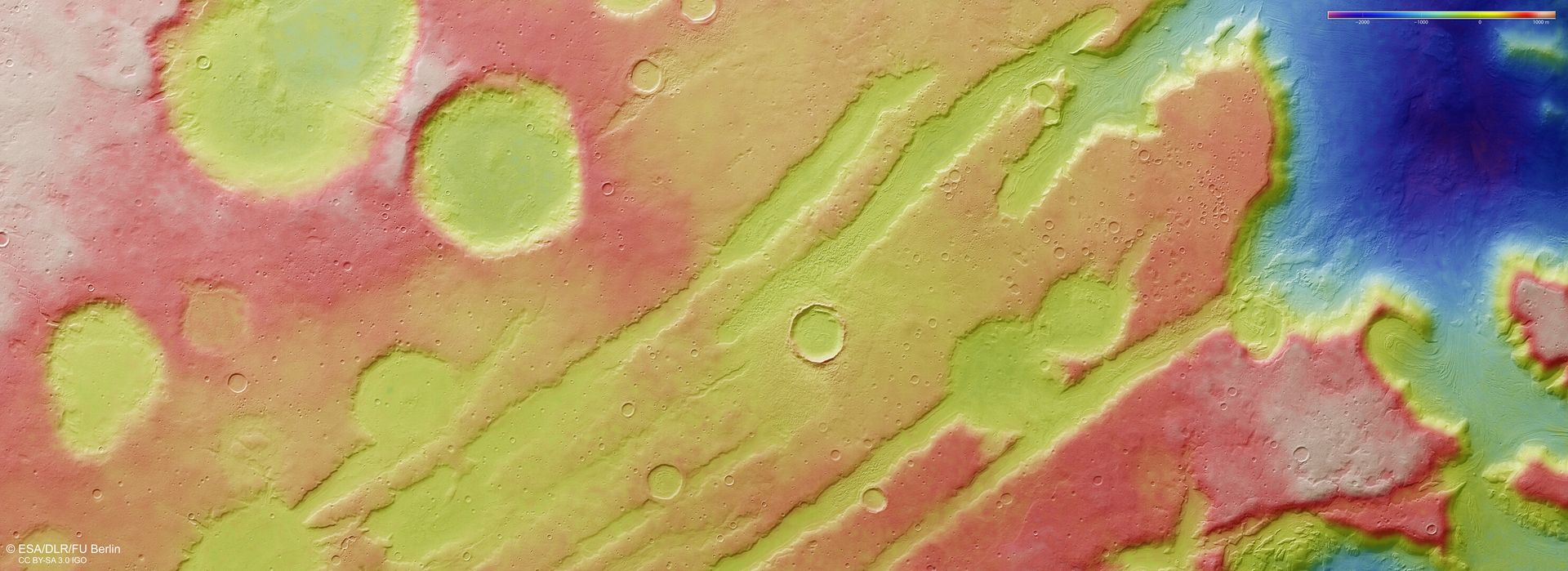
In this image, based on a digital terrain model of the region, from which the topography of the landscape can be derived, lower parts of the surface are shown in blues and purples, while higher altitude regions show up in whites and reds, as indicated on the scale to the top right. (Credit: ESA/DLR/FU Berlin)

This image places the Coloe Fossae region within the broader geological context of Mars, highlighting the boundary between the planet’s northern lowlands and southern highlands. This global divide varies in form, ranging from steep, two-kilometre-high escarpments to more gradual, fragmented transitions like the Protonilus Mensae seen here. The blue-toned upper half marks the northern lowlands, which span much of Mars’s northern hemisphere, while the yellow-orange lower half represents the southern highlands.
The larger white box outlines the area captured by ESA’s Mars Express High Resolution Stereo Camera (HRSC) on 19 October 2024. The smaller box marks the specific region featured in the latest images shown earlier. (Credit: NASA/MGS/MOLA Science Team)
The Slopes of Apollinaris Mons on Mars After an Avalanche : ExoMars Trace Gas Orbiter, ESA

A meteoroid impact near Apollinaris Mons triggered over 100 dust streaks on Mars, captured by ESA’s ExoMars Trace Gas Orbiter on 24 December 2023. The Colour and Stereo Surface Imaging System (CaSSIS) camera imaged the event’s aftermath, including faint impact craters in the discolored region at the slope’s base. Analysis of earlier data suggests the impact occurred between 2013 and 2017. Most Martian slope streaks form when fine dust slides down steep terrain, driven by wind and seasonal changes, not water or impacts.
A new Nature Communications study led by Valentin Bickel (University of Bern) used deep learning to analyze over two million streaks from NASA’s Mars Reconnaissance Orbiter, identifying five regional hotspots. Fewer than one in a thousand streaks are linked to impacts, making it a rare event. The image covers an area of approximately six square kilometres and was captured on 24 December 2023. Mars location: 7.1°S, 173.4°E. CaSSIS image MY37_027142_351.
Sun’s Polar Magnetic Field in Motion : Solar Orbiter, ESA
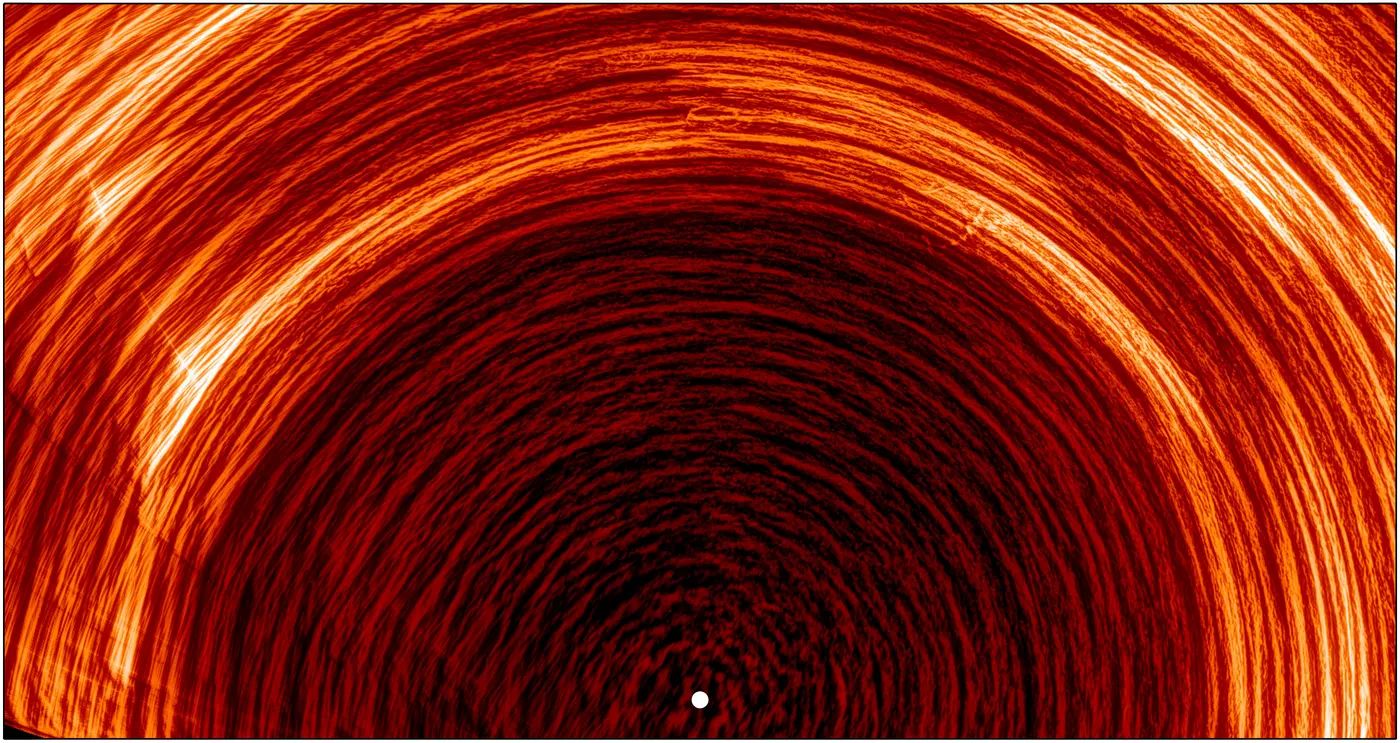
ESA’s Solar Orbiter has captured the first detailed view of the Sun’s south pole, revealing that magnetic fields migrate poleward faster than previously thought—at speeds up to 20 m/s.
The magnetic network on the solar surface leaves imprints in the chromosphere above. In images of this region taken by Solar Orbiter's Extreme Ultraviolet Imager (EUI), these imprints appear as bright spots. This processed EUI image of the Sun's south pole (indicated by the white dot) is constructed by combining eight days of observations from March this year.
This image shows the tracks of the bright spots. Due to the Sun's rotation, they are seen as elongated, bright arcs. This challenges earlier models based on ecliptic-plane data, which suggested slower polar drift. The findings, published in Astrophysical Journal Letters, show supergranules, plasma cells two to three times Earth’s size, acting as tracers of the Sun’s global magnetic conveyor belt. Long-term polar observations remain critical to understanding the solar cycle and space weather dynamics. (Credit: ESA & NASA / Solar Orbiter / EUI-Team)
Comet Lemmon & Satellite Streaks : Dan Bartlett, Astrophotographer
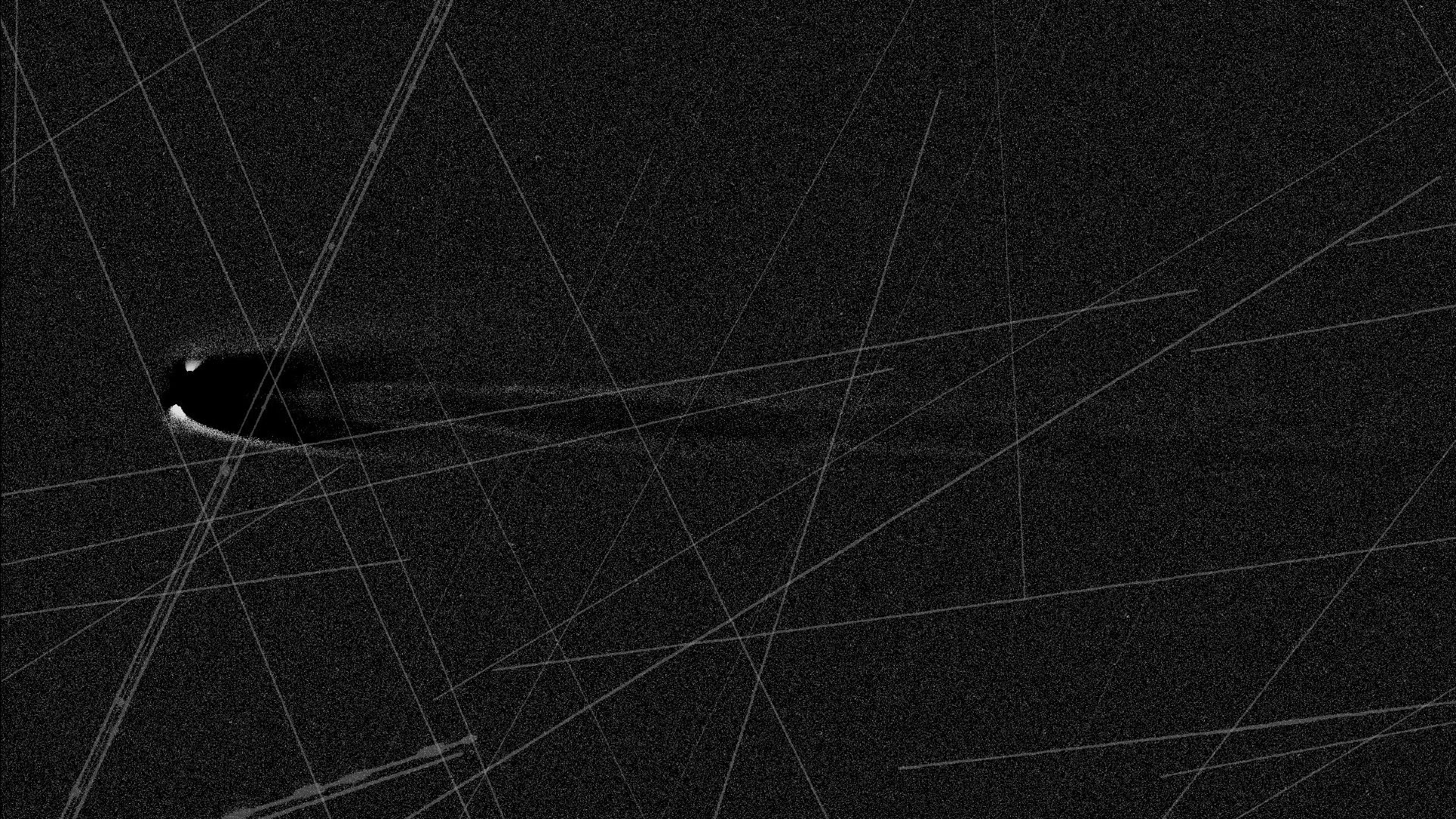
A stacked image of Comet Lemmon showing areas where bright pixels were excluded during processing.
As Comet Lemmon (C/2021 A1) brightened in the Northern Hemisphere sky, astrophotographers captured its evolving coma and tail, only to find their images marred by satellite streaks. The growing number of satellites in low Earth orbit has made it increasingly difficult to obtain clean astrophotography. Observers report that nearly every subframe now contains at least one streak. To mitigate this, many rely on stacking algorithms that reject bright pixels. While effective, this workaround highlights what is becoming increasingly concerning: the accelerating impact of satellite constellations on ground-based astronomy and the need for coordinated mitigation strategies. (Credit: Dan Bartlett)
Ash Plume From The Planchón‑Peteroa Volcano : Copernicus Sentinel-2 Satellites

On 25 October 2025, Chile’s Planchón‑Peteroa volcanic complex released a plume of gas and ash rising about 600 m above the crater. Winds shifted the plume eastward into Argentina, where ash spread across snow‑covered slopes. This Copernicus Sentinel‑2 image captures the event, highlighting the role of the satellites in monitoring volcanic activity and its impacts. (Credit: European Union, Copernicus Sentinel-2 imagery)

SCIENCE
ESA Research Tests Microbial Protein Systems from “Thin Air” for Long-Duration Spaceflight
The European Space Agency (ESA) has launched a pilot project to test whether astronauts can produce protein “out of thin air,” using gas fermentation technology adapted for space. The initiative, called HOBI-WAN (Hydrogen Oxidizing Bacteria In Weightlessness As a source of Nutrition), is funded under ESA’s Terrae Novae exploration program.
The HOBI-WAN project’s study phase aims to provide a solution to the question “How will astronauts survive on future long-duration missions to the Moon or Mars – without resupply from Earth?”
Working with ESA’s prime contractor on the project, OHB System AG and Finnish startup Solar Foods, the project will adapt Solar Foods’ Solein process, which grows protein-rich powder, without sunlight from Xanthobacter bacteria fed with hydrogen, oxygen, and carbon dioxide. On Earth, ammonia supplies nitrogen, but in space urea from astronauts could serve that role. The technology will be tested aboard the International Space Station to see if it functions in microgravity. If successful, it could reduce reliance on resupply missions and support long-duration stays on the Moon or Mars. Beyond spaceflight, ESA notes the approach could also contribute to sustainable food production on Earth, addressing resource scarcity and food security challenges.
Soft-Robotic Exosuit With Artificial Muscles Tested in Exterres CRATER, ADAMA Analogue for Mobility on Lunar and Martian Missions
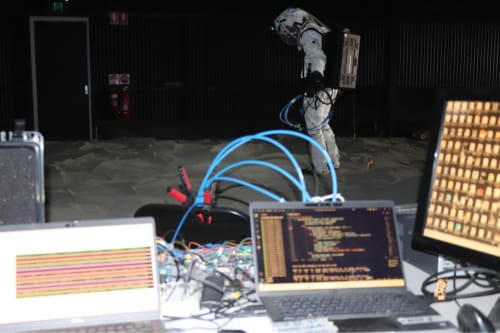
The soft exosuit was worn beneath the astronaut prototype’s pressure suit during the ADAMA mission simulation in Adelaide, Australia. (Credit: Dr Emanuele Pulvirenti)
Researchers tested a soft robotic exosuit designed to assist astronauts during planetary surface exploration, aiming to reduce lower‑limb fatigue while preserving natural movement. The garment‑style prototype uses inflatable artificial muscles , an outer nylon layer and an inner thermoplastic bladder, anchored by Kevlar waist and knee fittings to apply controlled assistive force.
The University of Bristol prototype joined an international proof‑of‑concept trial, run by the Austrian Space Forum at the Exterres CRATER analogue (the largest simulated lunar environment in the Southern Hemisphere), in University of Adelaide, Australia and the ADAMA campaign, where teams evaluated walking, climbing and load‑carrying on loose regolith under realistic operational tasks.
Developers plan a hybrid assist‑and‑resist capability to both boost performance and help mitigate muscle atrophy, and they envision follow‑on tests in orbital environments. Early results show mobility benefits and promise for reduced metabolic cost, but engineers note remaining work on durability, integration beneath pressure suits, telemetry and human‑factors validation before operational deployment. The program also highlights potential terrestrial rehabilitation uses.
ISRO Validates Gaganyaan Recovery, Completes Key Parachute Qualification for Human‑Rated Capsule
11 November, 2025
ISRO advanced Gaganyaan crew‑module recovery with an Integrated Main Parachute Airdrop Test (IMAT‑03) at Babina, Jhansi (India) on 3 November 2025. An Indian Air Force IL‑76 dropped a simulated 6.5‑ton crew module from 2.5 km; the full ten‑parachute sequence deployed, exercising apex cover (the protective shroud at the top of a reentry capsule that keeps parachute hardware stowed during descent) separation, drogues (the small, stabilizing parachute deployed after the apex cover jettison to slow and orient the module, reduce descent speed for main parachute deployment), three pilot chutes, and three reefed main parachutes where disreefing (the staged release of reefing lines that progressively increases the main parachute’s effective area) was intentionally delayed to validate asymmetric load behavior. Reefing lines are cords or straps used to temporarily restrict a parachute canopy’s opening area during deployment. The system achieved a stable descent and soft landing, and ISRO said two of three mains suffice for a safe landing. The test stressed off‑nominal conditions and it could be seen as a key step toward planned uncrewed flights and a potential crewed launch in early 2027.
This test follows ISRO’s earlier integrated air‑drop test (IADT) in August 2025 and recovery rehearsals before Gaganyaan’s orbital missions. Engineers from Vikram Sarabhai Space Centre (VSSC), ISRO, Aerial Delivery Research and Development Establishment (ADRDE), Defence Research and Development Organisation (DRDO), the Indian Air Force and Army will analyze telemetry and schedule further qualification flights ahead of uncrewed demonstrations and crew certification as ISRO tightens timelines before orbital flights soon.
Intense Solar Activity Triggers Record Geomagnetic Storm with Global Radio Blackouts and Auroras
ISS Crew Forced into Radiation Sheltering and Blue Origin's ESCAPADE Launch Delayed
11 November, 2025
A burst of intense solar activity in mid‑November forced operators and astronauts to balance caution with mission momentum. On November 11 a record setting X5.1 flare from sunspot AR4274 produced an energetic coronal mass ejection (CME) that triggered widespread radio blackouts over Africa and Europe and seeded a severe geomagnetic response, followed by another major X‑class eruption (X4) from the same region days later. Models and observations showed multiple CMEs converging on Earth, generating G‑level geomagnetic storms that produced vivid auroras visible across North America and as far south as Mexico; NOAA and GOES imagery captured glowing oval structures from orbit.
GOES X‑ray (or NOAA) Solar Flare Classification Scale
Solar flares are ranked on a scale of A, B, C, M, and X, where each letter signifies a tenfold increase in energy output, with X being the strongest class. Within each class, there is a linear scale from 1 to 9 (e.g., X1 to X9), and each subdivision is 10 times stronger than the last, like an X2 flare being twice as powerful as an X1. Scientists measure these flares by their peak X-ray brightness in a specific wavelength range (1–8 Å).
Geomagnetic Storms
The geomagnetic storm scale, or G-scale, is a 5-level system developed by NOAA to rate the severity of geomagnetic storms based on their potential impact. The scale ranges from G1 (minor) to G5 (extreme) and is used to inform operators of power grids, satellites, and communication systems about potential technological disruptions, similar to how hurricane categories work.
Although these events produce spectacular public‑facing auroras they imposing real constraints on communications, launch windows, and crew safety. These storms had immediate operational effects. Mission control advised stationing crew in better‑shielded modules aboard the International Space Station as particle fluxes rose; Russian cosmonauts temporarily relocated within the U.S. lab module out of an abundance of caution. High‑frequency radio communications were degraded regionally during peak X‑ray flux, prompting advisories for aviation and maritime users over sunlit sectors.
13 November, 2025
Space industry activity was also disrupted. Blue Origin scrubbed a planned New Glenn liftoff amid the most intense space weather of 2025, citing potential effects on NASA’s twin ESCAPADE probes; teams waited for particle levels to subside before rescheduling.
When the mission proceeded on Nov. 13, Blue Origin successfully launched the ESCAPADE Mars probes aboard the New Glenn rocket and achieved the first recovery landing of New Glenn’s massive first-stage booster. The mission deployed the small spacecraft on a trajectory to Mars, marking a commercial provider supporting planetary science. New Glenn’s booster returned to a shipborne platform, demonstrating reusability for the company’s heavy launcher
The flight validated integrated launch, deployment and recovery procedures, though independent review will monitor long‑term reliability and cost implications. The achievement strengthens Blue Origin’s operational credibility amid a competitive market for commercial launch services to scientific, government customers and investors.
NASA’s ESCAPADE Twin Spacecraft Begin Journey to Study Mars Magnetosphere
13 November, 2025
NASA’s ESCAPADE mission sent two small twins, UC Berkeley-built spacecraft dubbed Blue and Gold, toward Mars on 13 November 2025. Designed as a low‑cost investigation of Mars’ space environment, the twin probes will study how the solar wind interacts with the planet’s magnetosphere and atmosphere during cruise and near‑Mars operations. As the first coordinated dual‑orbiter mission to another planet, they will provide simultaneous measurements of particle flows and magnetic field dynamics. The goal is to clarify how energy and matter move between the solar wind and Mars’ atmosphere, knowledge vital for safeguarding future robotic and human explorers.
Blue Origin’s New Glenn rocket carried the probes on their journey and achieved its first successful booster landing, marking a milestone in heavy‑lift reusability. Following deployment, the spacecraft entered a year‑long Earth‑proximity orbit to build speed before a trans‑Mars injection in late 2026, using the Oberth effect to maximize efficiency. Arrival at Mars is expected in September 2027, with science operations beginning in spring 2028.
ESCAPADE is a NASA SIMPLEx (Small Innovative Missions for Planetary Exploration) project supported by the agency’s Heliophysics Division. The mission is directed by the Space Sciences Laboratory at UC Berkeley, with spacecraft design provided by Rocket Lab. Launch arrangements were managed through NASA’s Launch Services Program at Kennedy Space Center, using the VADR (Venture‑class Acquisition of Dedicated and Rideshare) contract.
The mission pairs compact instruments with innovative trajectory and communications plans to demonstrate affordable deep‑space operations and distributed measurements that complement larger assets. ESCAPADE’s success depends on surviving radiation, maintaining telemetry across interplanetary distances, and coordinating ground operations as the twins transition from cruise to Mars encounter and science.
Satellite Data Show Earth’s Magnetic Field Behaves Differently Than Predicted by Long‑Held Models
13 November, 2025
Scientists have discovered that Earth’s magnetosphere behaves differently than long‑standing models predicted, revealing a reversal in charge distribution that could reshape our understanding of space weather.
For decades, researchers assumed the dawn side of Earth’s magnetic bubble carried a positive charge and the dusk side a negative one, driving electric currents across near‑Earth space. But new satellite data and magnetohydrodynamic (MHD, the study of how electrically conducting fluids, such as plasmas and liquid metals, behave when interacting with magnetic fields) simulations led by Kyoto University show the opposite: the morning side is negatively charged, while the evening side is positive. The reversal is most pronounced near the equator, though polar regions still follow traditional patterns.
This twist arises from the way solar wind plasma flows interact with Earth’s magnetic field lines, altering how electric forces build up. The findings highlight that charge distribution is a result of plasma motion, not a static property. Researchers also note parallels for magnetized planets like Jupiter and Saturn, where similar plasma‑field interactions shape planetary environments.
China’s Shenzhou‑20 Postponement, Boeing’s 2024 Starliner Highlight Need for Standardized, Interoperable Space Rescue Frameworks
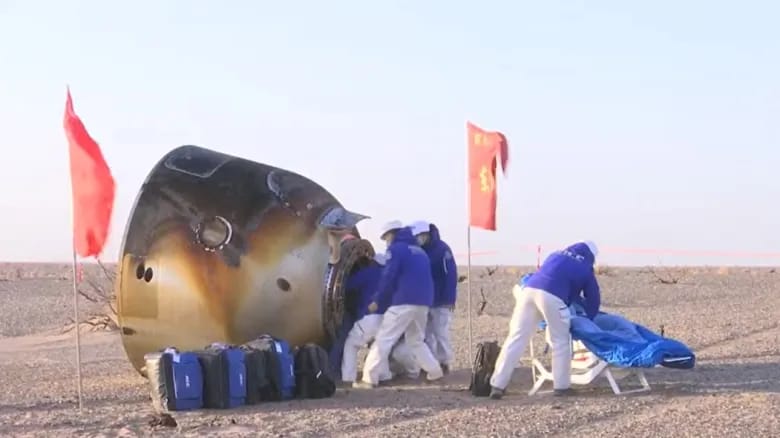
The Shenzhou‑21 return capsule, carrying Shenzhou‑20 crew members Chen Dong, Chen Zhongrui, and Wang Jie, landed at the Dongfeng site in Inner Mongolia on November 14, 2025. (Credit: CCTV/BACC)
14 November, 2025
China’s Shenzhou‑21 spacecraft undocked from the Tiangong complex on 14 November to return the Shenzhou‑20 crew Commander Chen Dong, Chen Zhongrui and Wang Jie after inspections found tiny cracks in the Shenzhou‑20 return‑capsule viewport likely caused by external debris. The Shenzhou‑20 crew, due to return back to Earth on Nov. 5., was stranded after the suspected debris strike raised concerns about their spacecraft’s integrity. The China Manned Space Agency had activated contingency plans, conducting simulations and safety assessments while confirming the Tiangong station could sustain both Shenzhou‑20 and Shenzhou‑21 crews.
CMSA announced that the Shenzhou‑20 spacecraft which was meant to bring the crew back, “does not meet the requirements for the astronauts’ safe return” and will remain in orbit for experiments while the Shenzhou‑21 spacecraft carries the crew home. Meanwhile, the Shenzhou‑21 taikonauts remain stranded aboard Tiangong pending safe return. Preparations for Shenzhou‑22 continue, with the vehicle positioned as a potential backup if needed.
Experts highlight that this along with the Boeing’s 2024 Starliner astronaut stranding episode, where propulsion and system anomalies extended astronauts’ stay and constrained return options, reveal systemic gaps in global rescue capability. The Starliner contingency and other station-level off-nominal events show how failures can suddenly limit egress. Moreover, insurance and liability questions complicate multi‑national rescues, while commercial stations will introduce new interfaces and contractual boundaries.
Reliance on ad hoc solutions, such as delaying returns or repurposing upcoming launches, leaves crews vulnerable. Proposals for coordinated “space rescue services” stress the need for international frameworks, rapid‑response vehicles, and shared contingency planning. Although costs and coordination burdens could rival routine operations, predictable rescue frameworks would still reduce exposure, protect crew, and stabilize manifests as human spaceflight diversifies globally.

GOVERNANCE
Concerns Grow Over NASA’s Goddard Lab Closures and Impact on Space Science Even As ESA Ships Artemis 4 Orion Service Module
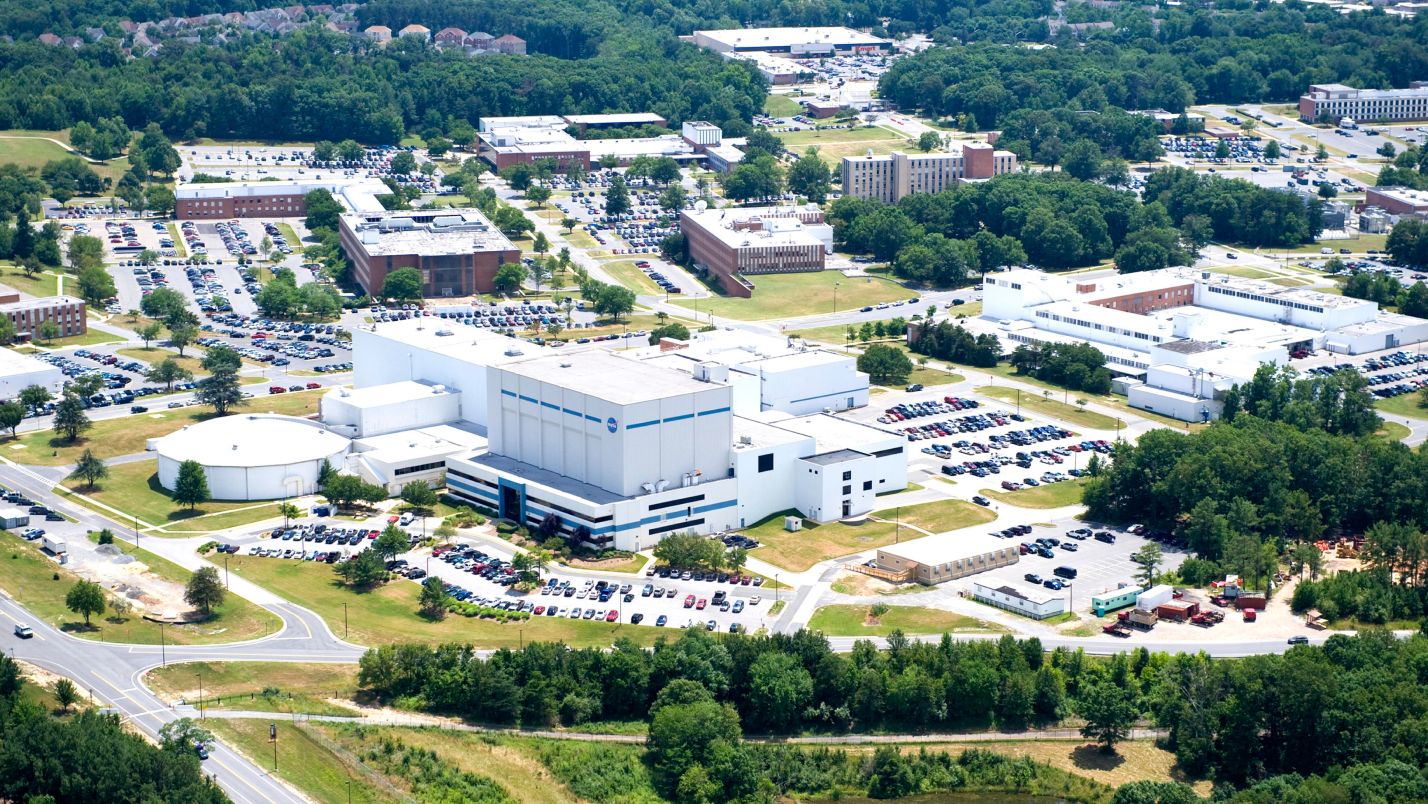
Aerial view of NASA’s Goddard Space Flight Center. (Credit: NASA)
11 November, 2025
U.S. Congressional leaders are raising alarms over NASA’s ongoing closures and consolidations at the Goddard Space Flight Center, warning of risks to U.S. space science leadership and workforce stability.
Representative Zoe Lofgren, ranking member of the House Science Committee, in a formal letter has called on NASA to halt the shutdown of laboratories at Goddard until Congress receives clear justification. She argues that the closures could undermine critical missions, including the Nancy Grace Roman Space Telescope and future observatories, by disrupting research continuity and eroding technical expertise. Maryland’s congressional delegation, led by Senators Chris Van Hollen and Ben Cardin, echoed these concerns in another formal letter to Acting Administrator Sean Duffy. They requested detailed information on cost analyses, affected facilities, and the impact on technological capabilities, including specialized labs such as propulsion and electromagnetic testing chambers.
Reports suggest that voluntary separations, deferred resignations, and building consolidations have already displaced thousands of civil servants and contractors. Lawmakers warn that these changes may accelerate talent loss to foreign competitors, particularly China, which has been actively recruiting scientists with higher salaries and stable research opportunities. The delegation emphasized Goddard’s historic role in developing and operating instruments for missions ranging from Hubble and James Webb to upcoming projects like the Habitable Worlds Observatory.
It might seem that NASA’s restructuring reflects short-term budget pressures at the expense of long-term scientific capacity. Lawmakers insist that any consolidation must preserve Goddard’s world-class capabilities and comply with legal requirements. They have demanded answers by mid-November, illustrating the urgency of maintaining U.S. leadership in space exploration and research.

The image shows Orion on the left with a solar wing from the European Service Module extending right, separating Earth above from the Moon below. The module’s cones include main propulsion thrusters, smaller grouped reaction‑control thrusters for orientation, and larger paired auxiliary thrusters facing the camera. (Credit: NASA)
13 November, 2025
Meanwhile, the European Space Agency has delivered the Orion service module for NASA’s Artemis IV mission, despite the ongoing political uncertainty.
Built in Germany, the module provides propulsion, power, and life support for Orion, making it essential to deep-space missions. Its shipment to the U.S. comes after earlier attempts to cancel Artemis under the Trump administration despite multinational backing. ESA’s role has been in line with Europe’s long-term commitment to Artemis, with service modules already supporting earlier flights.
Study Reveals Widespread Vulnerabilities in Satellite Communications Systems
10 November, 2025
A new study has revealed widespread vulnerabilities in geostationary satellite communications, exposing sensitive civilian, corporate, and government data to interception. Researchers from the University of California, San Diego and the University of Maryland used consumer-grade equipment to monitor traffic from 39 geostationary satellites. They found that a “shockingly large amount” of information, including voice calls, text messages, corporate emails, ATM data, and even military and police communications, was transmitted without encryption. In-flight Wi-Fi traffic and cellular backhaul were also visible, raising concerns about passenger privacy and critical infrastructure security.
The findings shed light on how outdated systems and limited adoption of encryption leave satellite links vulnerable to passive eavesdropping. While some providers have begun deploying fixes after disclosure, the absence of a unified mandate for encryption across the industry persists. Researchers warn that attackers could exploit exposed data for identity theft or interference with infrastructure, stressing that satellite networks should be treated as inherently insecure unless protected at multiple layers.

MILITARY
Firefly Aerospace Expands Defense Capabilities with Scitec National Security Technology Company Acquisition
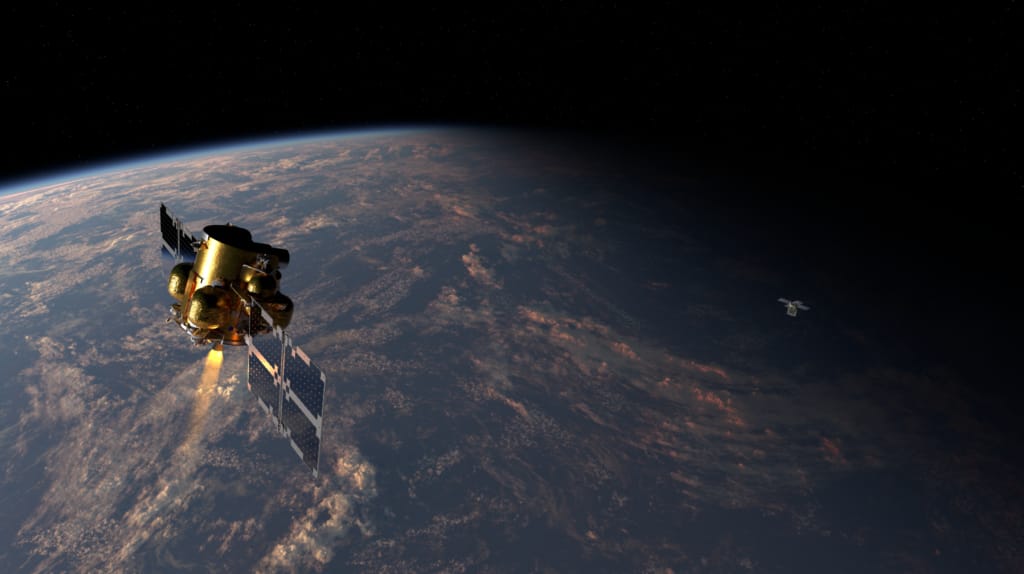
A rendering of Firefly Aerospace's Elytra spacecraft in low Earth orbit (LEO). (Credit: Firefly Aerospace)
9 November, 2025
U.S.-based space and defense tech company, Firefly Aerospace has completed its $855 million acquisition of Scitec, a national security technology company, signaling a significant expansion into defense and intelligence markets.
The deal, announced in November 2025, positions Firefly to integrate Scitec’s expertise in secure communications, sensors, and mission systems with its existing launch and spacecraft services. Company officials emphasized that the acquisition will vertically integrate and broaden Firefly’s role beyond commercial spaceflight into areas critical to U.S. national security, including tactical and strategic applications. Scitec will operate as a wholly owned subsidiary, providing continuity for its workforce and ongoing contracts.
Firefly’s acquisition strengthens its defense and space portfolio by combining hardware with AI‑enabled software for missile warning, surveillance, and space domain awareness. The deal adds big‑data processing capabilities, state‑of‑the‑art facilities, and more than 475 technical experts, while securing contracts that support national security agencies, commercial customers, and future Moon‑to‑Mars missions. This acquisition is in line with a wider trend of commercial space firms deepening ties with defense agencies amid rising geopolitical competition.
Avio - Lockheed Martin Partnership to Establish New Solid Rocket Motor Facility in the United States

Avio's manufacturing site in Colleferro, Rome. (Credit: Avio)
10 November, 2025
Avio and Lockheed Martin have signed a non-binding term sheet to establish a new solid rocket motor (SRM) production facility in the United States.
The agreement outlines plans for a plant that will produce advanced solid propulsion systems, leveraging Avio’s expertise in European launch vehicles and Lockheed Martin’s U.S. defense and aerospace footprint. The plant will be designed as a vertically integrated merchant supplier, expected to serve Lockheed Martin and other customers. Under the agreement, Lockheed Martin will receive preferred access to part of the facility’s production capacity, aimed at meeting future demand for both tactical and strategic SRMs. The arrangement is intended to strengthen supply chain resilience within the U.S. industrial base, reducing reliance on external, foreign sources and ensuring cost‑effective propulsion systems.
According to the companies, the initiative responds to increasing demand for propulsion technologies across satellite launches, missile defense, and emerging space missions. Both companies indicated they will negotiate a Strategic Cooperation Agreement to formalize collaboration and align on long‑term goals. Governments and contractors are seeking diversified production bases amid geopolitical uncertainty and rising launch cadence. The details on location and timeline remain pending.

COMMERCIAL
Sateliot Opens European 5G Satellite Development Center in Barcelona, Unveils Tritó Satellite and Plans for Global 5G Constellation
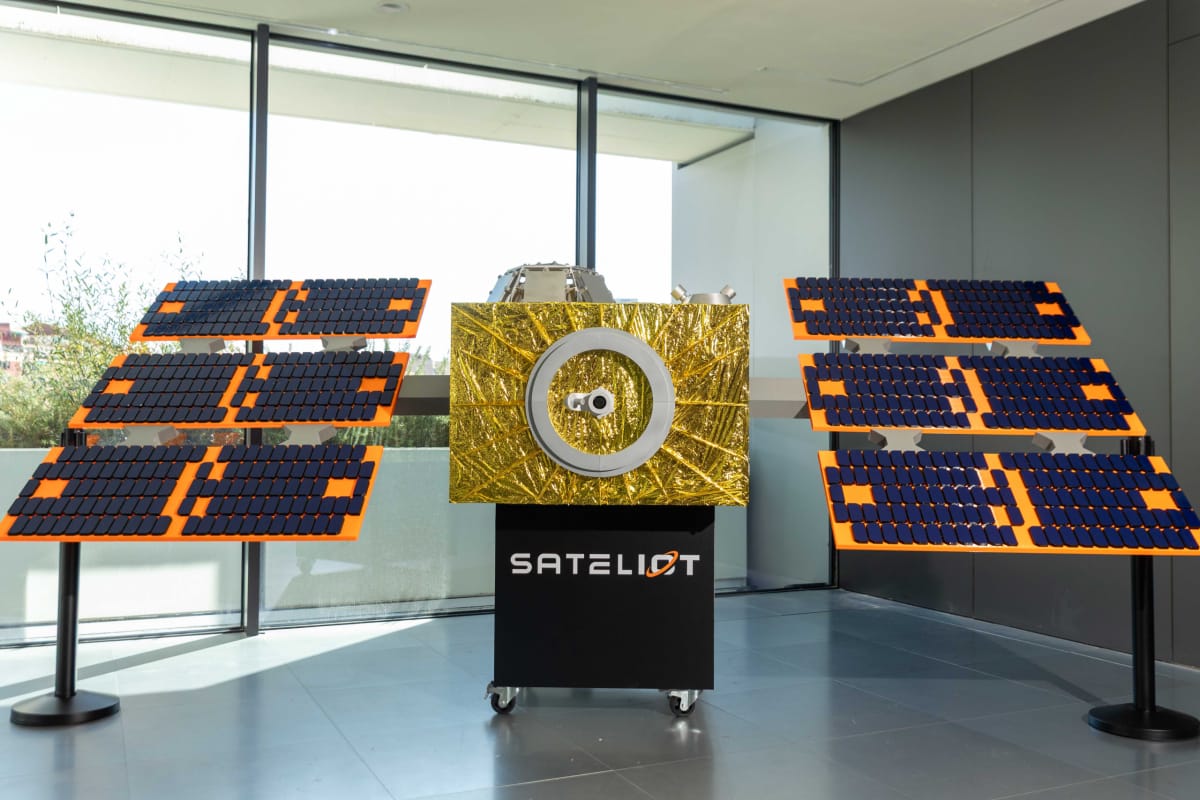
Sateliot showcased its Tritó satellite model during the Nov. 10 launch of its Barcelona 5G Satellite Development Center. (Credit: Sateliot)
10 November, 2025
Spanish global IoT connectivity provider Sateliot has inaugurated Europe’s first 5G satellite development center in Barcelona, unveiling its upgraded Tritó satellite model and outlining ambitious plans for a global constellation.
The new facility, equipped with a clean room, will produce satellites designed to expand beyond IoT connectivity toward wideband voice, video, and data links directly to smartphones. Sateliot intends to launch five small 15‑kg spacecraft in 2026 to strengthen IoT services under 3GPP standards, followed by 16 larger 150‑kg Tritó satellites in 2027 to demonstrate direct‑to‑device capabilities. Real‑time coverage is targeted for 2030, with regulatory filings for up to 500 satellites.
The company recently achieved a narrowband IoT connection using one of its four operational satellites, marking progress toward its dual‑use civil and defense applications. Backed partly by the Spanish government, Sateliot projects €1 billion in annual revenue by 2030, citing €250 million in contracts across 50 countries.
Europe has been pushing for technological sovereignty in space‑based 5G, while competition intensifies with U.S. direct-to-device firms like AST SpaceMobile, which, unlike Sateliot, is pursuing higher‑bandwidth smartphone connectivity in partnership with U.K.’s Vodafone.
China Breaks its Annual Launch Record as Long March 12 Adds Satellites to Guowang While Galactic Energy’s Ceres‑1 Mission Ends in Failure
10 November, 2025
China’s space sector saw both progress and setbacks on November 9–10, 2025, with a successful state launch and a failed commercial mission.
A Long March 12 rocket lifted off from Hainan, delivering the 13th batch of satellites for the Guowang megaconstellation. While the exact payload count was undisclosed, the launch likely added nine satellites, bringing the constellation to more than 100. Guowang, led by state-owned China SatNet, aims to deploy nearly 13,000 satellites in low Earth orbit by the early 2030s, with 400 targeted by 2027. U.S. analysts report that the satellites have been placed in orbits around 1,100 kilometers in altitude, with inclinations of either 86.5 degrees or 50 degrees. Notices to Airmen (NOTAMs) suggest that Sunday’s mission followed the latter inclination.
The project is widely seen as China’s strategic counterpart to SpaceX’s Starlink, though little technical detail has been released about the satellites themselves. Most of the satellites have been produced by the China Academy of Space Technology (CAST), with contributions from the Shanghai Engineering Center for Microsatellites and private firm GalaxySpace.
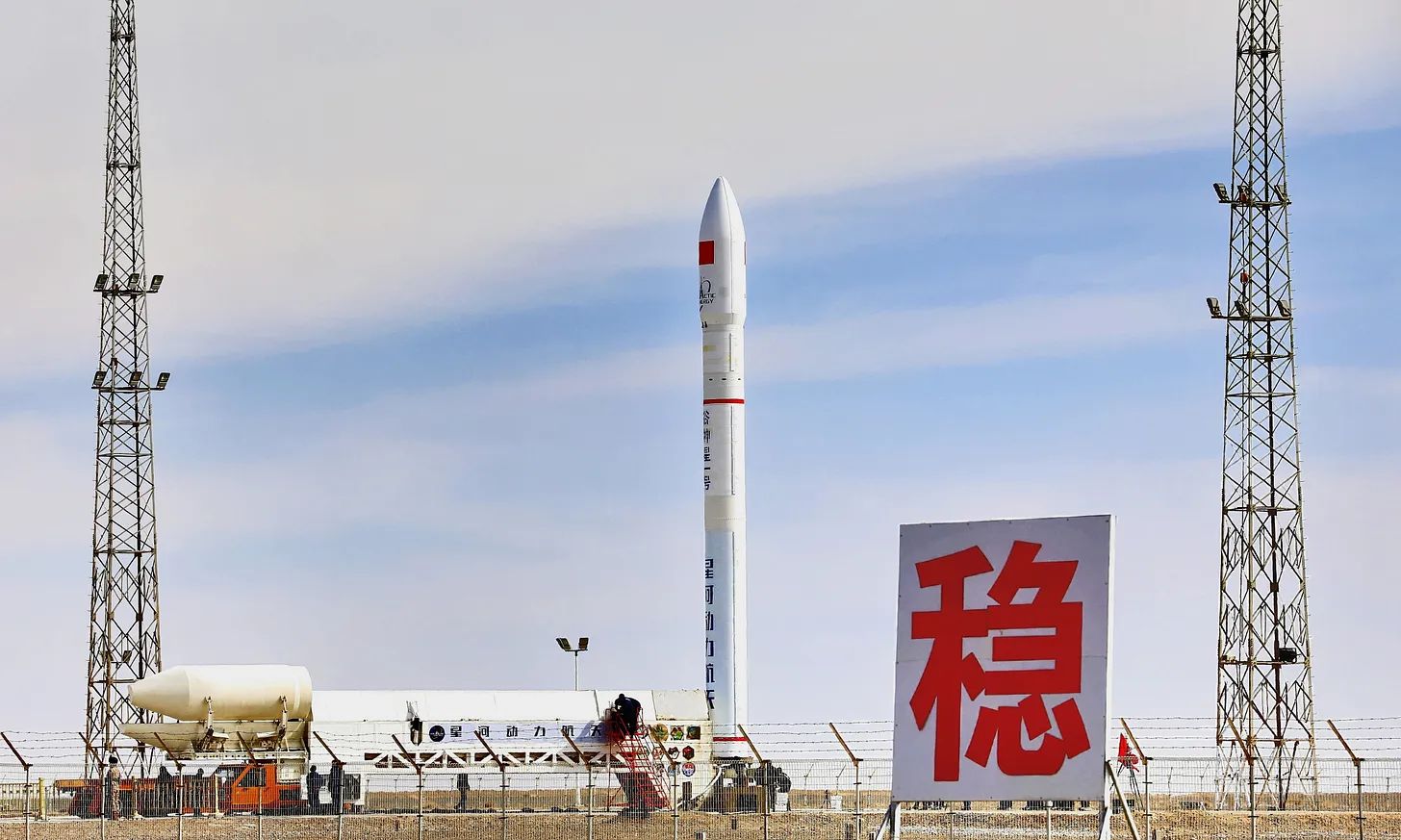
Galactic Energy’s Ceres-1 launch vehicle before launch at the Jiuquan Satellite Launch Center in March 2025. (Credit: China-in-Space)
Meanwhile, hours later, Beijing-based launch startup, Galactic Energy’s Ceres‑1 rocket failed during its 22nd mission, losing two payloads after its fourth stage shut down prematurely. The solid‑fuel Ceres‑1 lifted off from the Jiuquan Satellite Launch Center carrying three satellites, including two for the Jilin‑1 Earth‑observation constellation and one from Zhongbei University. While the first three stages performed as expected, the fourth stage shut down prematurely about 510 seconds after ignition, resulting in the loss of all payloads.
This was the rocket’s second failure in 22 missions, following a 2023 mishap. Galactic Energy is developing larger vehicles, including the Ceres‑2 and the reusable Pallas‑1, intended to compete with international systems like SpaceX’s Falcon 9
Even with the anomaly, China set a new annual launch record with 72 orbital missions in 2025, surpassing last year’s 68. A weekend flurry included three other rockets: Long March vehicles carrying Shiyan-32 and SatNet satellites, and CAS Space’s Kinetica-1 with Earth-observing payloads. The U.S. remains global leader with over 150 launches, mostly Falcon 9.
World's First High‑Volume Space Solar Manufacturing Facility Launched in New York by mPower

Credit: mPower Technology
12 November, 2025
mPower Technology, the New Mexico-based solar power module manufacturer, has inaugurated the United States’ first automated, high‑volume production line for satellite solar modules, marking a shift in how spacecraft power systems are manufactured. The facility at Universal Instruments Corporation, located in New York, is designed to scale production of mPower’s “DragonSCALES” technology, which uses interconnected small, high-efficiency silicon solar cells arranged in flexible sheets. Unlike traditional rigid panels, these modules can be tailored for satellites of varying sizes, offering resilience against damage and reduced manufacturing costs.
The new line begins with a 1‑MW annual capacity of DragonSCALES™ modules, set to double to 2 MW by mid‑2026. It is already supplying Airbus under a contract to produce Sparkwing solar arrays for over 200 MDA AURORA spacecraft. That agreement helped drive the launch of the high‑volume facility at UIC, signaling strong market confidence in DragonSCALES as a next‑generation standard for satellite power.
The company says automation will allow thousands of modules to be produced annually, supporting both commercial constellations and government missions. By moving solar module assembly from labor‑intensive processes to automated lines, mPower expects to lower barriers for operators deploying large fleets.
Space Cargo Unlimited and Atmos Plan to Test Industrial Production in Microgravity Starting 2026

Atmos Space Cargo’s Phoenix 2 spacecraft is set to transport Space Cargo Unlimited’s BentoBox platform for microgravity research and manufacturing during a 2026 mission. (Credit: Atmos Space Cargo)
12 November, 2025
Two European startups are preparing a series of autonomous manufacturing missions to low Earth orbit, aiming to demonstrate how microgravity can support new industrial processes.
Space Cargo Unlimited and Atmos Space Cargo announced plans to begin in 2026 with the first of seven missions. The partnership will combine Atmos’s Phoenix 2 orbital transfer and return system with Space Cargo Unlimited’s multi‑user “BentoBox” platform, designed to host experiments and manufacturing payloads. The missions are intended to test how microgravity conditions can improve production of advanced materials, pharmaceuticals, and other high‑value goods.
The companies emphasize that autonomous operations will reduce costs and increase scalability, while Phoenix 2’s return capability ensures manufactured products can be brought back to Earth. If successful, the program could help establish Europe as a player in space‑based manufacturing, a field currently led by U.S. initiatives. However, questions remain about economic viability, regulatory oversight, and whether demand for microgravity‑produced goods will justify large‑scale deployment.
IonQ Announces Deal to Acquire Skyloom for Quantum Key Distribution and to Expand Optical Communications Capabilities
12 November, 2025
U.S.-based general purpose quantum computer developer, IonQ has announced plans to acquire Skyloom Global, another U.S. company specializing in optical communications for space networks, marking another step in its rapid expansion across quantum technologies.
The deal, revealed by IonQ CEO Niccolò de Masi, is intended to strengthen efforts to build a global quantum key distribution (QKD) platform that integrates terrestrial and satellite systems. Skyloom, founded in 2017, has developed optical terminals for real‑time orbital data transport and has supplied hardware to programs such as the Space Development Agency’s Tranche 0 and York Space Systems’ transport layer. Its vision of a “fiberless internet” linking low Earth orbit, geostationary satellites, and ground infrastructure aligns with IonQ’s push to merge quantum computing, networking, and secure communications.
IonQ has pursued a string of acquisitions, including Qubitekk, ID Quantique, Capella Space, and Vector Atomic, positioning itself as a full‑stack quantum provider.
Amazon Rebrands Project Kuiper Satellite Broadband Venture as Amazon LEO

Credit: Amazon Leo
13 November, 2025
Amazon has rebranded its satellite broadband initiative, dropping the “Project Kuiper” codename in favor of a permanent identity: Amazon LEO.
The change aligns with the program’s transition from early development to operational deployment. Amazon LEO now has more than 150 satellites in orbit following six successful launches, with plans for over 80 missions to build out its initial low Earth orbit constellation. The company expects to provide high‑speed internet to underserved regions, positioning the service as both a consumer and enterprise offering. Customers already announced include JetBlue, L3Harris, DIRECTV Latin America, Sky Brasil, and Australia’s NBN Co.
Amazon has also unveiled three user terminals: Nano, Pro, and Ultra (for business and government customers), offering download speeds of 100 Mbps, 400 Mbps, and 1 Gbps. Amazon, with investments in large‑scale production and phased array antenna technology, will directly compete with Starlink and other satellite internet providers.
European Space Agency Awards Second Contract to SBQuantum for Diamond Magnetometer Prototype
13 November, 2025
Canadian quantum sensing company, SBQuantum has secured a second contract with the European Space Agency (ESA) to advance its quantum diamond magnetometer technology, highlighting Europe’s growing interest in quantum sensing for space applications. The €800,000 ($932,000) agreement, funded through ESA’s FutureEO program and supported by Canada–ESA cooperation, will deliver an upgraded prototype optimized for Earth observation missions. The device, designed to remain compact while improving sensitivity, accuracy, and bandwidth, builds on SBQuantum’s earlier feasibility study and its recognition as a finalist in the U.S. MagQuest Challenge. The diamond magnetometers could meet performance needs for monitoring Earth’s magnetic field, but practical validation is still required.
The collaboration is in line with an ongoing trend of adapting quantum technologies for orbital use, with potential applications ranging from planetary navigation to geophysics and security.
SES Expands Fleet Strategy With Relativity’s Terran R Launches and Partners with Infinite Orbits on Europe’s First Life‑Extension Mission
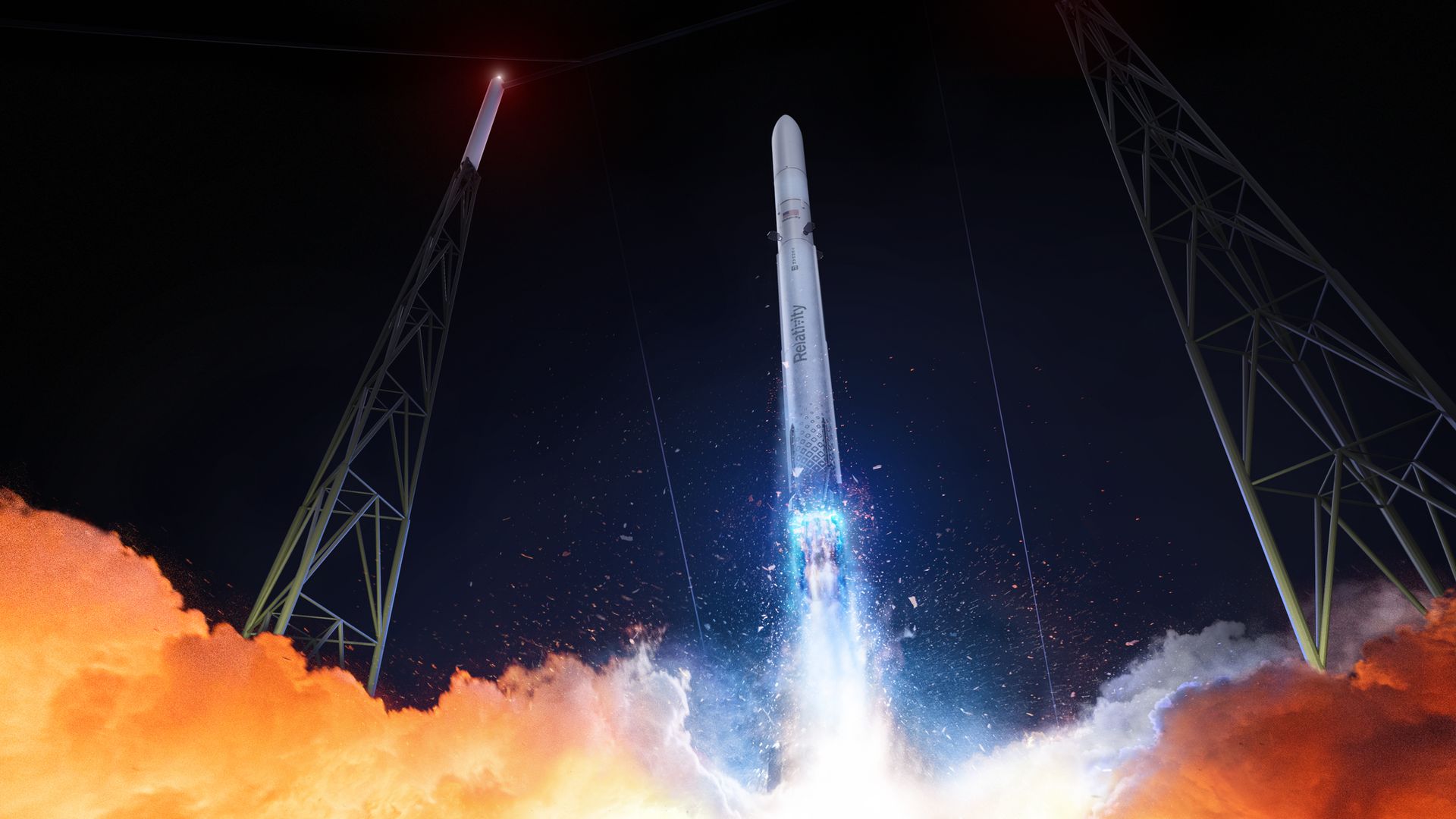
A render of the Terran R rocket. (Credit: Relativity Space)
13 November, 2025
SES has signed a multi‑launch agreement with Relativity Space for its Terran R rocket, a reusable, medium‑to‑heavy lift vehicle currently in development. The deal builds on earlier cooperation and follows SES’s interest in flexible launch options beyond traditional providers. Relativity’s Terran R, designed with 3D‑printed components and full reusability, is expected to compete in the same market segment as SpaceX’s Falcon 9. SES executives emphasized that securing multiple launches helps ensure capacity for future missions, particularly as the company integrates its expanded fleet following its acquisition of Intelsat in 2025.
14 November, 2025
In parallel, SES announced Europe’s first commercial satellite life‑extension mission through a partnership with Toulouse‑based Infinite Orbits. The mission will use the 750kg, Endurance docking vehicle, scheduled to launch in 2027, to extend the lifespan of an unnamed SES geostationary satellite by five years. The project is supported by the European Innovation Council and France’s “France 2030” program. Infinite Orbits positions the mission as a step toward routine orbital asset management, while SES highlights both economic efficiency and sustainability benefits.
Sierra Space Dream Chaser Spaceplane Completes Pre‑Flight Testing Ahead of 2026 Orbital Mission
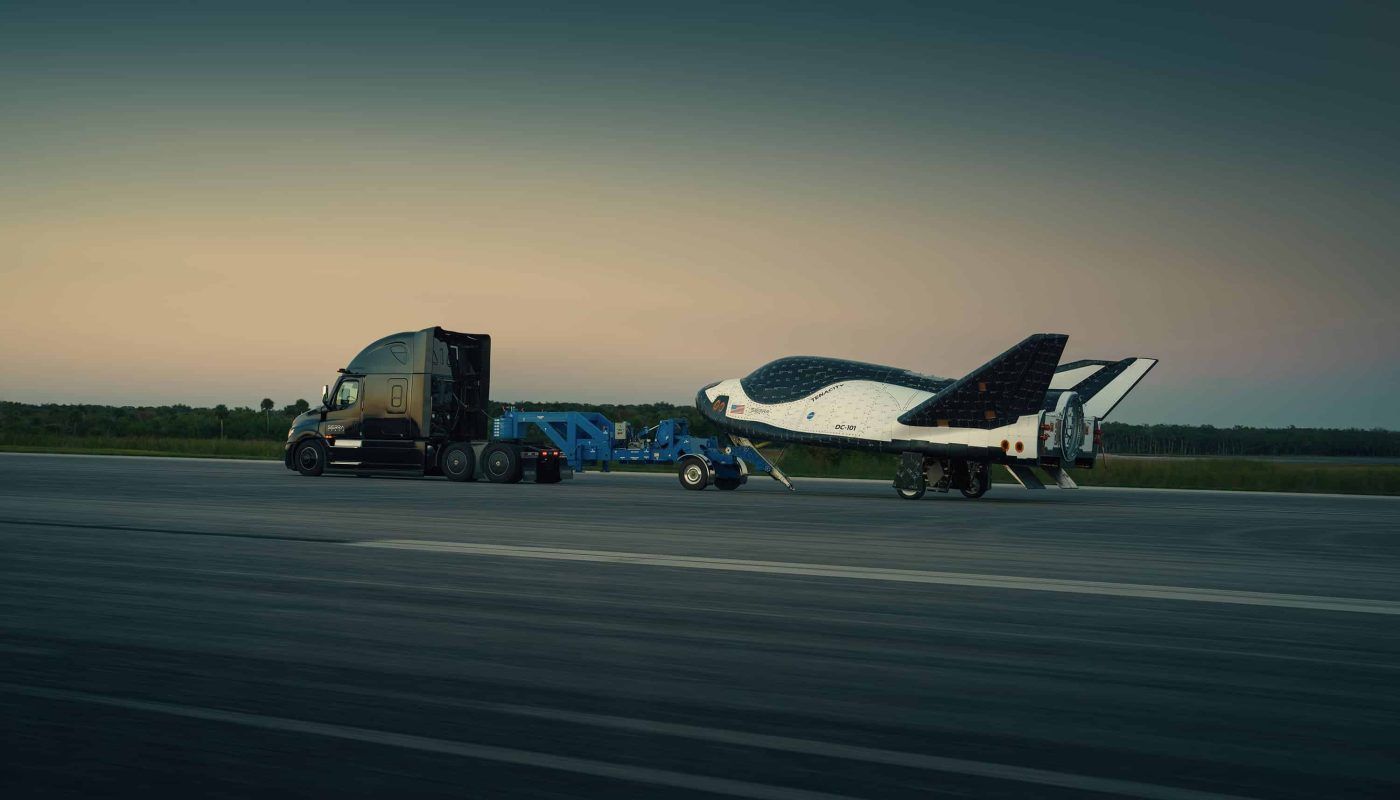
Dream Chaser also underwent tow testing at the Launch and Landing Facility, where a Freightliner Cascadia truck pulled the vehicle at high speeds to validate landing gear, steering, and autonomous navigation parameters. (Credit: Sierra Space)
17 November, 2025
Sierra Space’s Dream Chaser spaceplane has completed a comprehensive series of pre‑flight tests at NASA’s Kennedy Space Center, marking progress toward its its final round of acoustic testing in December 2025 and first orbital mission in late 2026.
The testing campaign included Electromagnetic Interference and Compatibility trials at NASA’s Space Systems Processing Facility, to ensure that the spacecraft can operate within expected electromagnetic environments. Dream Chaser also underwent tow testing at the Launch and Landing Facility, where a Freightliner Cascadia truck pulled the vehicle at high speeds to validate landing gear, steering, and autonomous navigation parameters. In addition, the spacecraft successfully demonstrated telemetry and command relay between Mission Control in Colorado and NASA’s Tracking and Data Relay Satellite System, confirming readiness for real‑time flight operations.
The campaign concluded with a post‑landing recovery rehearsal, simulating safing procedures and payload access. Final acoustic testing is scheduled for December 2025, followed by modifications for national security applications. Dream Chaser, a reusable lifting‑body vehicle capable of runway landings, remains on track for its first CRS‑2 demonstration mission to the ISS in Q4 2026, ending with a runway landing at Vandenberg Space Force Base. Sierra Space positions the program as a cost‑effective alternative to capsule‑based resupply, while NASA emphasizes the importance of diversified cargo transport.

RESEARCH SPOTLIGHT
Spectral Signatures of Atmospheric Microorganisms Could Help Detect Life on Exoplanets

An artist’s concept of a cloudy Earth-like exoplanet with colorful biota in the clouds. (Credit: Adam B. Langeveld/Carl Sagan Institute. Adapted from NASA/Ames/JPL-Caltech.)
Cornell researchers have developed spectral signatures of colorful microorganisms found in Earth’s atmosphere, opening a new pathway for detecting life on exoplanets with dense cloud cover. The study, led by Ligia Coelho at the Carl Sagan Institute, analyzed biopigments produced by microbes collected from Earth’s stratosphere. These pigments, which protect organisms from radiation and extreme conditions, create distinct reflectance spectra that can serve as potential biosignatures. While such microbes are rare in Earth’s atmosphere, their presence demonstrates that clouds could host detectable life elsewhere.
Astronomers previously considered thick clouds an obstacle to identifying life, but the findings suggest they may instead enhance detection opportunities. Modeling shows that widespread pigmented microbes could alter a planet’s appearance enough to be observed by future telescopes, including NASA’s planned Habitable Worlds Observatory and Europe’s Extremely Large Telescope. The findings on the biopigment spectra was published in the Astrophysical Journal Letters.
New Research Shows Planets May Generate Their Own Water During Formation, Expanding Possibilities for Habitability
New research suggests that planets may generate their own water during formation, expanding possibilities for habitability beyond traditional models.
An international team of scientists from Carnegie Science, the Institut de Physique du Globe de Paris (IPGP) and UCLA has shown that chemical reactions between hydrogen gas, “representing the early planetary atmosphere” and rocky material such as iron-rich silica melt, in protoplanetary disks can produce significant amounts of water. This mechanism challenges the long‑held view that water must be delivered externally by comets or icy bodies. The scientists compressed samples up to nearly 600,000 times atmospheric pressure (60 gigapascals) and heated them to over 4,000 degrees Celsius (7,200 degrees Fahrenheit). Laboratory experiments and modeling indicate that such in‑situ processes could create oceans early in a planet’s history, even in systems lacking abundant ice.
The findings carry major implications for the search for life. If water can form naturally during planetary assembly, habitable environments may be more common across the galaxy than previously assumed. This perspective aligns with broader efforts to reassess planetary habitability, suggesting that the conditions for sustaining life could arise in diverse settings, not just Earth‑like worlds with external water delivery. The research was published in the journal Nature.
Despatch Out. 👽🛸
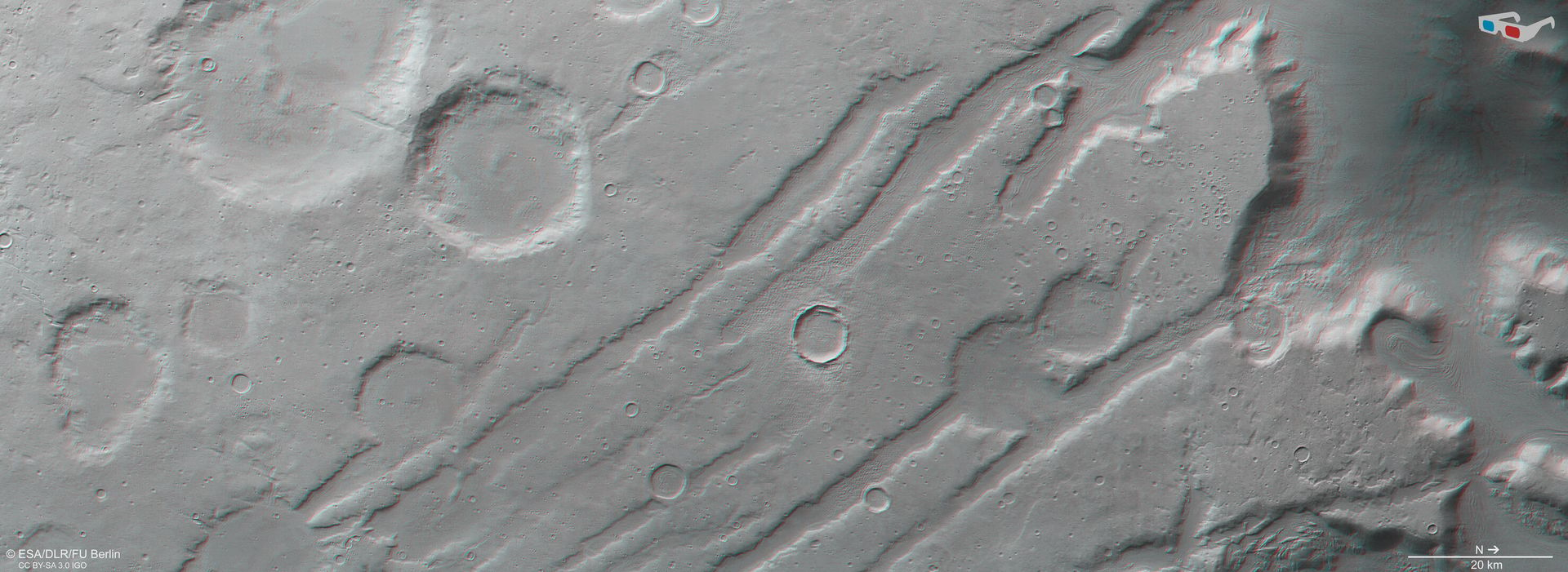

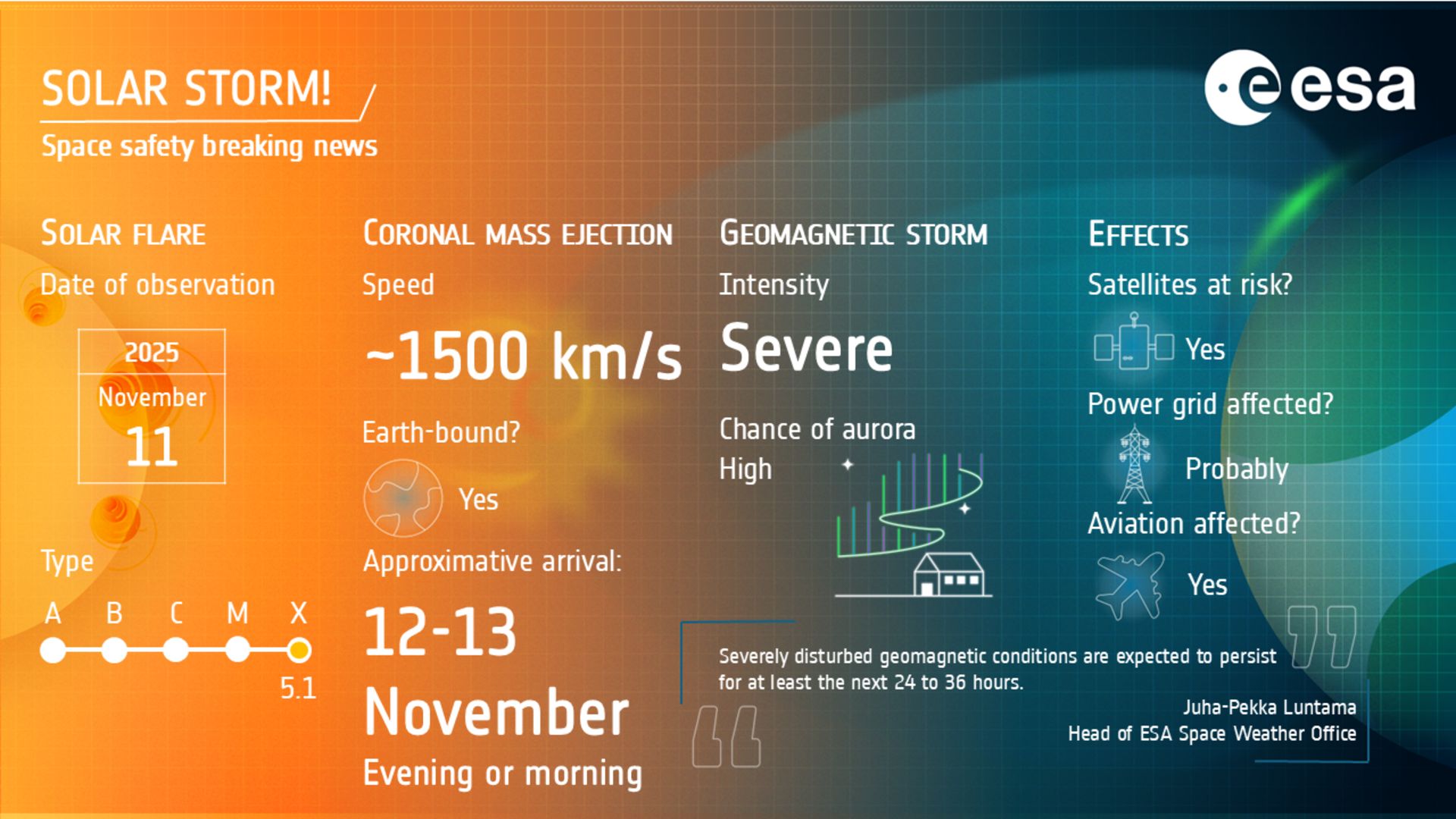

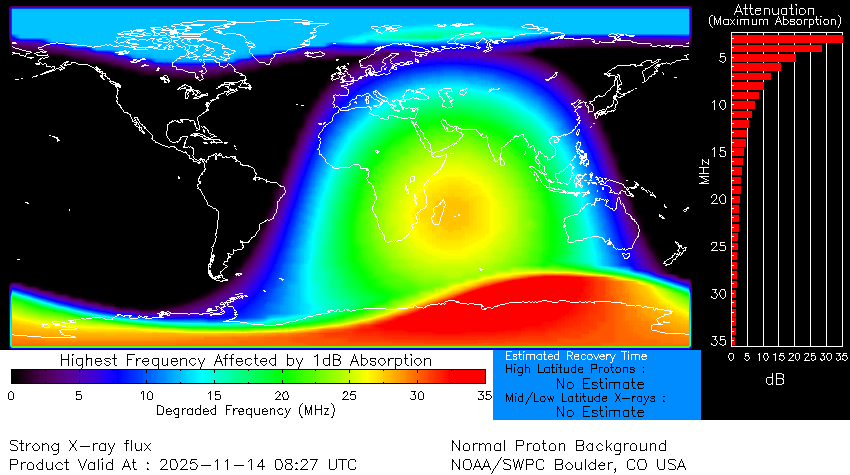

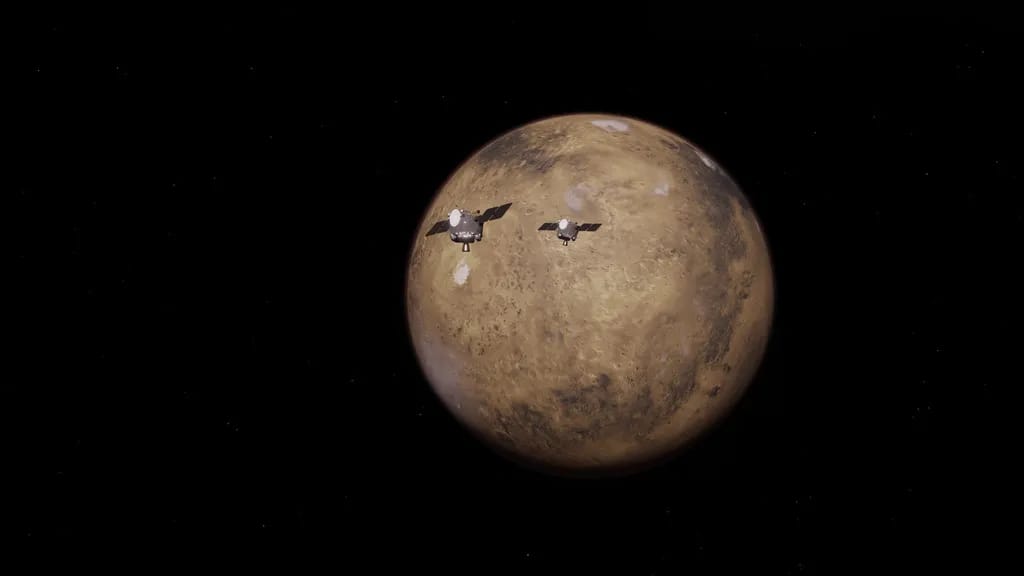

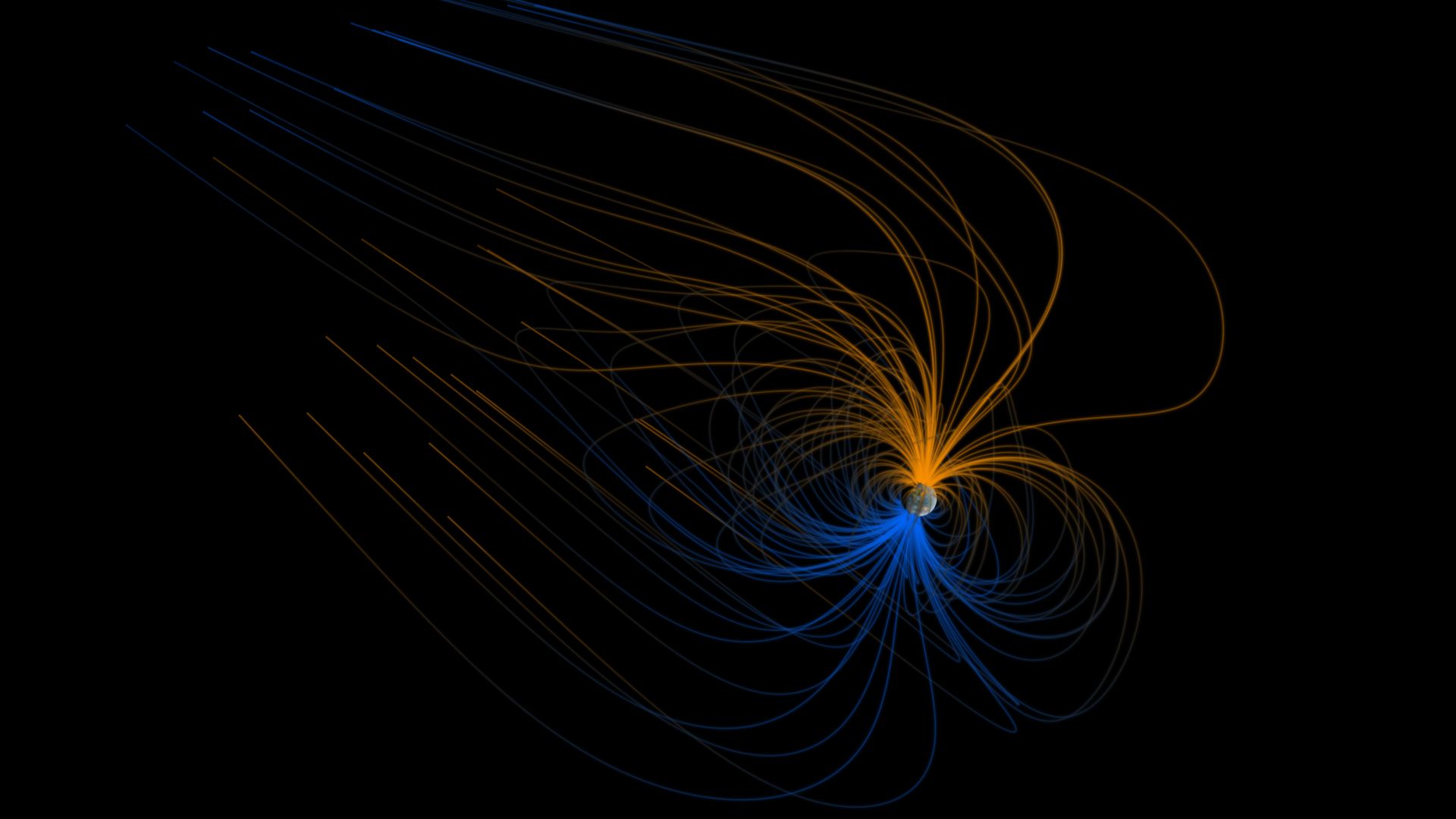

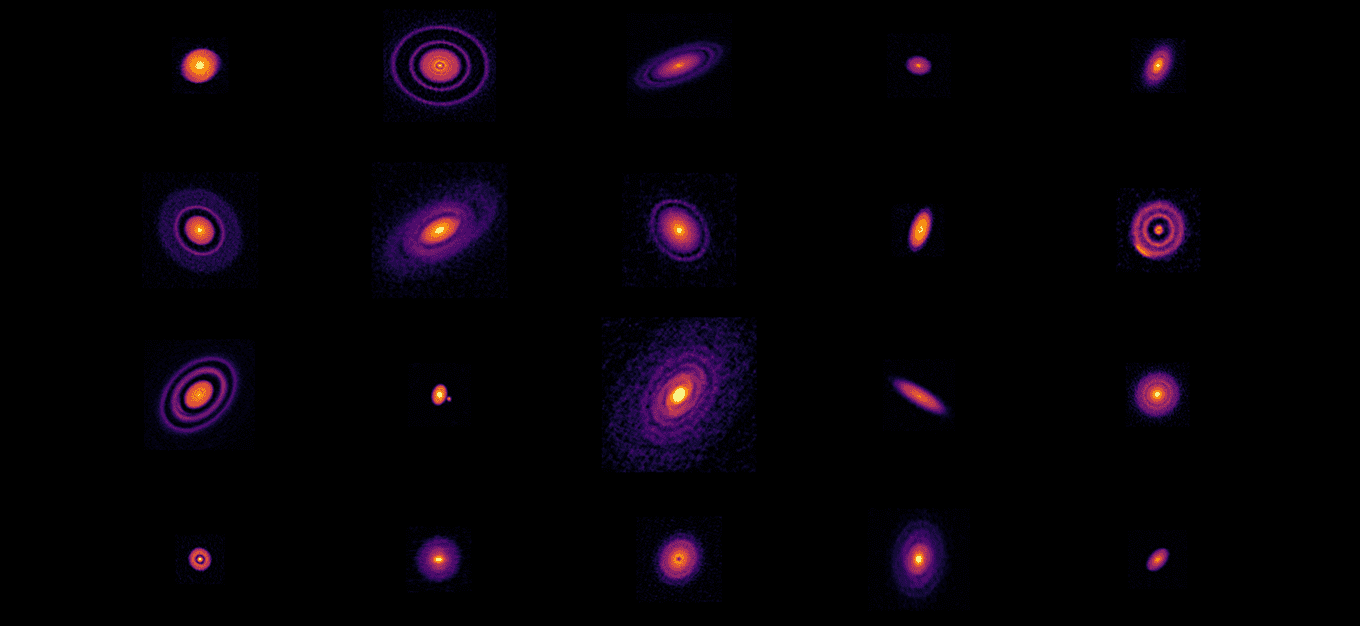
Reply